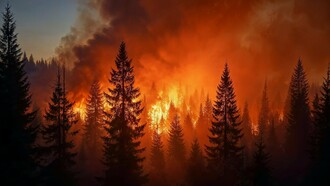Every second day of February is commemorated as World Wetlands Day (WWD). Its primary purpose is to raise awareness about the importance of wetlands to humanity and on planet Earth. And, hopefully, through the campaign, people will move to action in the preservation of these ecosystems.
But, before going into the reason for the celebration, it is important to know the nature of wetlands.
Wetlands and their roles
Wetlands are land areas that are either seasonally or permanently covered by shallow water. They are ecosystems that play critical roles in Earth’s natural environment. They may come in the forms of:
- lakes, rivers, marshes, swamps, fens, ponds, and billabongs (inland wetlands);
- lagoons, mangroves, estuaries, saltwater marshes, and coral reefs (coastal wetlands);
- fishponds and rice paddies;
- salt-pans, these are actually man-made wetlands.
Wetlands come in varied sizes. Some of them occupy a massive expanse. While others are not bigger than a hectare.
As mentioned earlier, wetlands play a very important role for all of humanity, the flora and fauna, and in nature itself. Here are at least three of the benefits these ecosystems provide.
Wetlands ensure that mankind gets fresh water
The world now faces a growing freshwater crisis. For people in developed countries, water scarcity may still be an abstract concept. But, for many families worldwide, it’s already a stark reality. And, this crisis might even get worse in the next few years if we don't act quickly to resolve the issues. The impact of climate change, as well as the mismanagement of existing water resources, are two of the contributing factors that threaten humanity and the planet. And sadly, we - humans - are inefficient users of water. We consume more freshwater than Mother Nature can replenish.
Wetlands filter pollutants from water
Pesticides, silts, nitrates, and other toxic substances from the industry and farms pollute our water. Thankfully, the marshes trap these pollutants and sediments. They efficiently prevent the impurities from going further downstream.
Natural shock absorbers
The roots of trees in coastal wetlands protect the shoreline from erosion. They serve as a buffer against raging storm waters, landslides, and wind. These are just a handful of the many benefits mankind and nature can get from the varied wetlands worldwide.
World Wetlands Day
How does World Wetlands Day come to be? On February 2, 1971, an intergovernmental treaty called the Convention on Wetlands was adopted on the shores of the Caspian Sea in Ramsar City, Iran. Its mission is:
The conservation and wise use of all wetlands through local and national actions and international cooperation, as a contribution towards achieving sustainable development throughout the world.
But, it was only in 1975 that the Convention’s programs came into force. Around 90% of the United Nations member-states have acceded to become “Contracting Parties”. Since then, February 2 has been celebrated as World Wetlands Day (WWD). And, each year’s celebration carries a specific theme. In 2021, the theme is Wetlands and Water. The campaign emphasizes wetlands’ contribution to the quantity and quality of freshwater on Earth.
Everyone is encouraged to participate in the many events prepared for this year’s campaign. Groups and individuals may also organize activities in their local areas. While teachers may set a classroom discussion and prepare quizzes for their students.
With the varied campaign efforts, it is hoped that more and more people would work towards the protection and preservation of the different wetlands in their surroundings.















